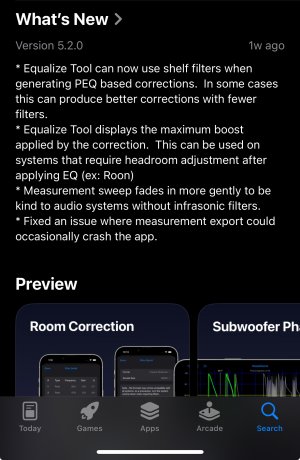Yesterday until late at night I experimented with RC. I used different combinations: RC + iPhone mic, RC + iPhone + Dayton mic, HouseCurve + iPhone mic, Housecurve + iPhone + Dayton mic. I made a lot of measurements. I tried to keep my position the same, sometimes I held the phone higher or lower to check if there was a difference.
My conclusions in my conditions and equipment are that RC definitely works better after the update. The graphs are similar to HouseCurve + Dayton calibrated, but only at low frequencies up to 1 kHz. At higher frequencies there are significant differences and lack of repeatability.
Only HouseCurve + Dayton calibrated gave me a result of +/- 3 dB in the range of 24 -16000 Hz. RC + Dayton gives quite good results, RC + iPhone gives the worst. RC is more inaccurate despite several sweeps.
I keep repeating: to measure something, the input signal must be accurate and reliable. Otherwise, each of us can paste here graphs from RC, which do not mean much.
Wiim should first allow the use of calibration files. Then we can assess whether RC works well or not, the results will be more accurate, more repeatable. It will even be possible to consciously change the sound, if Wiim added target curve editing - this is my next conclusion.
But at the moment the results are inconsistent, so this can't be done.
These are just my conclusions, you don't have to agree with them. I'm sticking with HouseCurve + Dayton for now. But I'm a big supporter of Wiim and I'm waiting for more updates.



